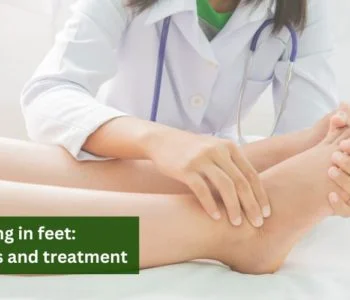The Complete Diet Chart for a Lifetime of Bone Health
 Orthopaedic
Orthopaedic
The Complete Diet Chart for a Lifetime of Bone…
In recent times, public bone health has become a subject of major studies and speculation. Why so? Bone is a pivotal part of the human body not just to provide structure to the body but they anchor muscles and store calcium. As we age, their health deteriorates because we peak our bone mass at the age of 30. While the body continues to remodel after that age, we lose bone mass gradually, resulting in the bones becoming brittle.
In most acute cases, one can develop osteoporosis, a condition in which bones deteriorate to an extent that they become brittle, resulting in multiple fractures.
What leads to bone damage?
The single biggest cause of bone deterioration is the gradual loss of calcium, caused by a diet low on calcium. A lifestyle with a lack of physical activity and consumption of alcohol and tobacco can worsen the situation.
The risk factor: Who is at a higher risk of bone damage?
- Women
- People of white and Asian descent
- People with a family history
- People suffering from high typhoid level
- Underweight people
- Overweight people
The right diet for a lifetime of bone health
Since what you eat or don’t eat has a lot to do with your bone health, it becomes absolutely necessary to keep handy a list of food items that you must include in your diet to maintain a lifetime of bone health.
Protein
Protein rich food
Lentils
Milk products
Chickpea
Egg
Bones are made up of 50 per cent of protein. Little wonder then that a protein-rich diet is a must to maintain bone health. Research has shown that a low protein diet decreases calcium absorption and affects the rate of bone formation and breakdown.
Vegetables
Cabbage
Capsicum
Okra
Plantains
Potatoes
Spinach
Sweet potatoes
Broccoli
Jackfruit
Kale
Fruits
Bananas
Blackberries
Figs
Grapefruit
Guava
Kiwi
Passion Fruit
Plantain
Raspberries
Strawberries
Watermelon
Bone density is measured by the amount of calcium and minerals in them. So, high intake of green and yellow vegetables and fruits during the growing up years of a person and adult life increases bone materialization.
Vegetables that are a great source of Vitamin C would be the first thing that you should include in your diet since they stimulate bone formation and protect bone cells from damage.
In women over the age of 50, consumption of onion has shown 20 per cent lower risk for osteoporosis than women, who eat them rarely.
Calories
Calories-rich food
Grains
Sardines
Salmon
To build and maintain strong bones, the diet must have 1,200 calories per day, with plenty of vitamins and protein that support bones. Studies have shown that a diet with low calories leads to lower bone density in normal and overweight people. Many people with heavy weight lose bone density as they switch from high calorie to low calorie food.
Magnesium and zinc
Magnesium and zinc-rich food
Kidney beans
Bananas
Shellfish
Avocado
Eating food with high magnesium and zinc is very beneficial for bone health. Magnesium helps convert Vitamin D into active forms that promote calcium absorption and zinc promotes building of bone building cells and prevents the excessive breakdown of bones. It also traces minerals needed in very small portions of your bones.
Omega 3
Omega 3-rich food
Chia seed
Pumpkin seeds
Anchovies
Tuna
Walnut
Consuming food with high Omega 3 protects bones against aging. Also, Omega 3 fats are necessary to counter the Omega 6 fats.









